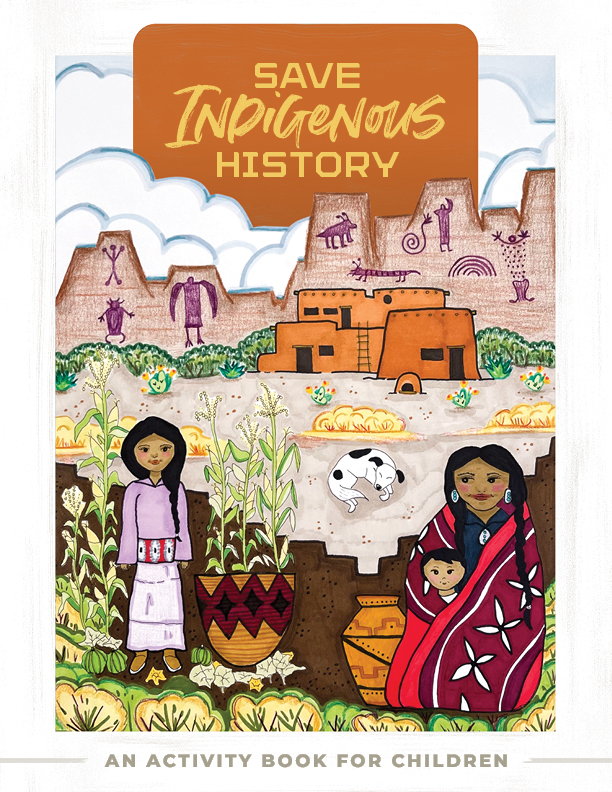Artists’ Reflections on Save Indigenous History: An Activity Book for Children
We are excited to announce the release of Save Indigenous History: An Activity Book for Children. This 30 page book is full of activities, coloring pages, and educational material that teach kids about respectful visitation of archaeological sites.
Five talented Indigenous artists illustrated many of the pictures for this project, including:
- Xenia Berejnoi (Yaqui Yoeme and Mixtec)
- Angelo Cortez (Chicano and Akimel O’odham)
- Derrick Gonzales (Tohono O’odham and Pascua Yaqui)
- Natalya Nez (Diné)
- Kayla Shaggy (Diné and Anishinaabe)
For the book launch, we asked the artists about their creative process. Read on to learn more about the challenges they faced, cultural elements they included in their work, and what they hope the impact of this book will have on the next generation.
What inspired you to work on this project?
I was inspired to apply for this project because it combined many of the things that I am passionate about: art, history, my culture, and the outdoors. The opportunity to create and collaborate with other artists for such an important matter was a no-brainer. I’m super thankful and excited to have my work presented in this activity book. –Natalya Nez
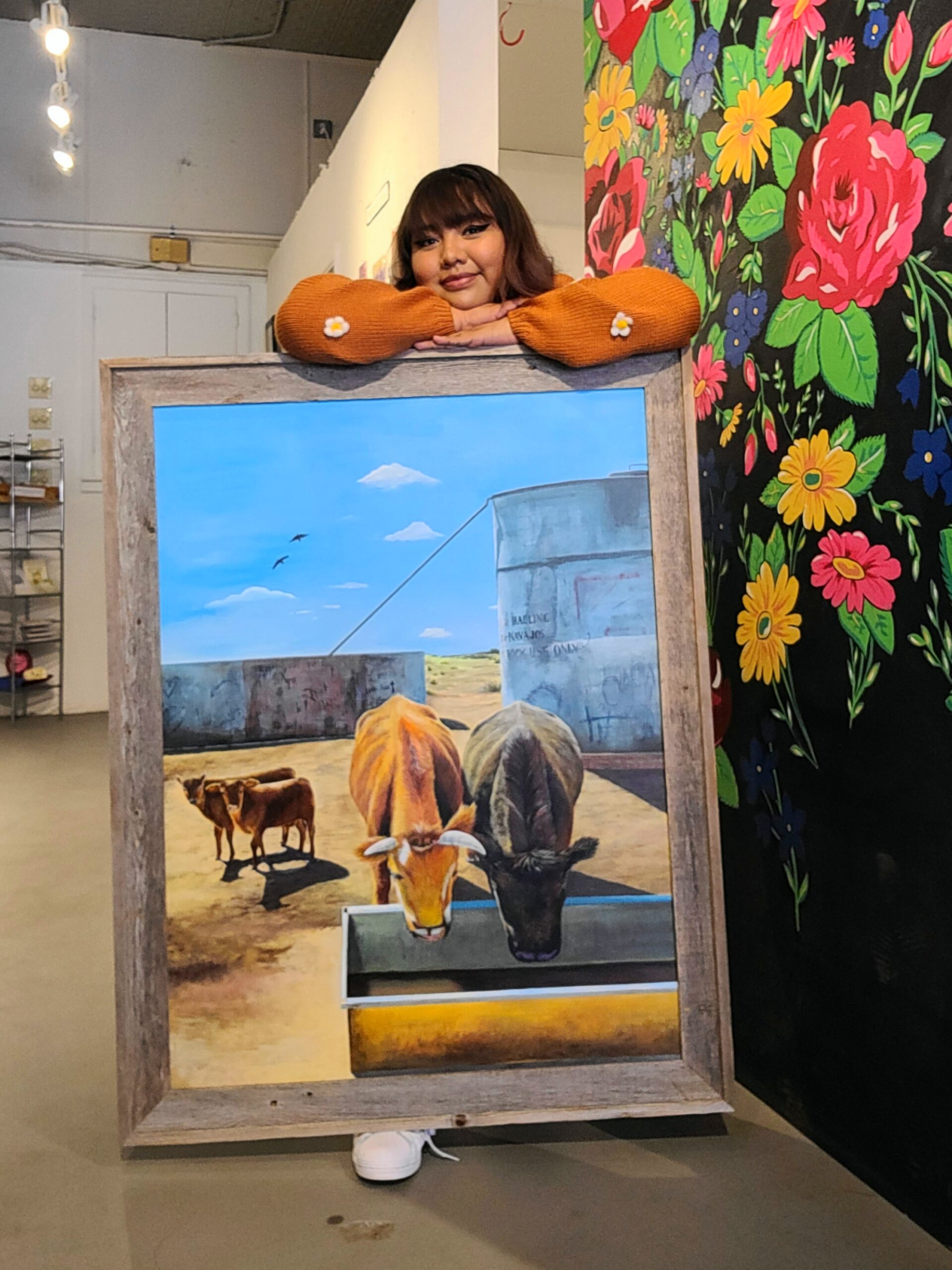
Natalya Nez with her artwork.
I always enjoy working with Archaeology Southwest when the opportunity comes, but the idea of doing work for a children’s book that would be used as a tool to teach the youth to respect the land and artifacts really inspired me for this project. The idea of what this book represents was inspiring as well. –Angelo Cortez
What did you enjoy about creating art for the book? What was challenging about creating art for the book?
I enjoyed using the prompts and finding the specific poses/imagery needed to illustrate the imagery. What was challenging was finding a way to make it detailed yet simple enough for the children to understand the imagery/pictures. For the sloth picture [page 19], I had to really think hard and try to not be too influenced by other people’s renditions. I think I came up with something original and fun that I hope others will like and enjoy coloring. –Kayla Shaggy
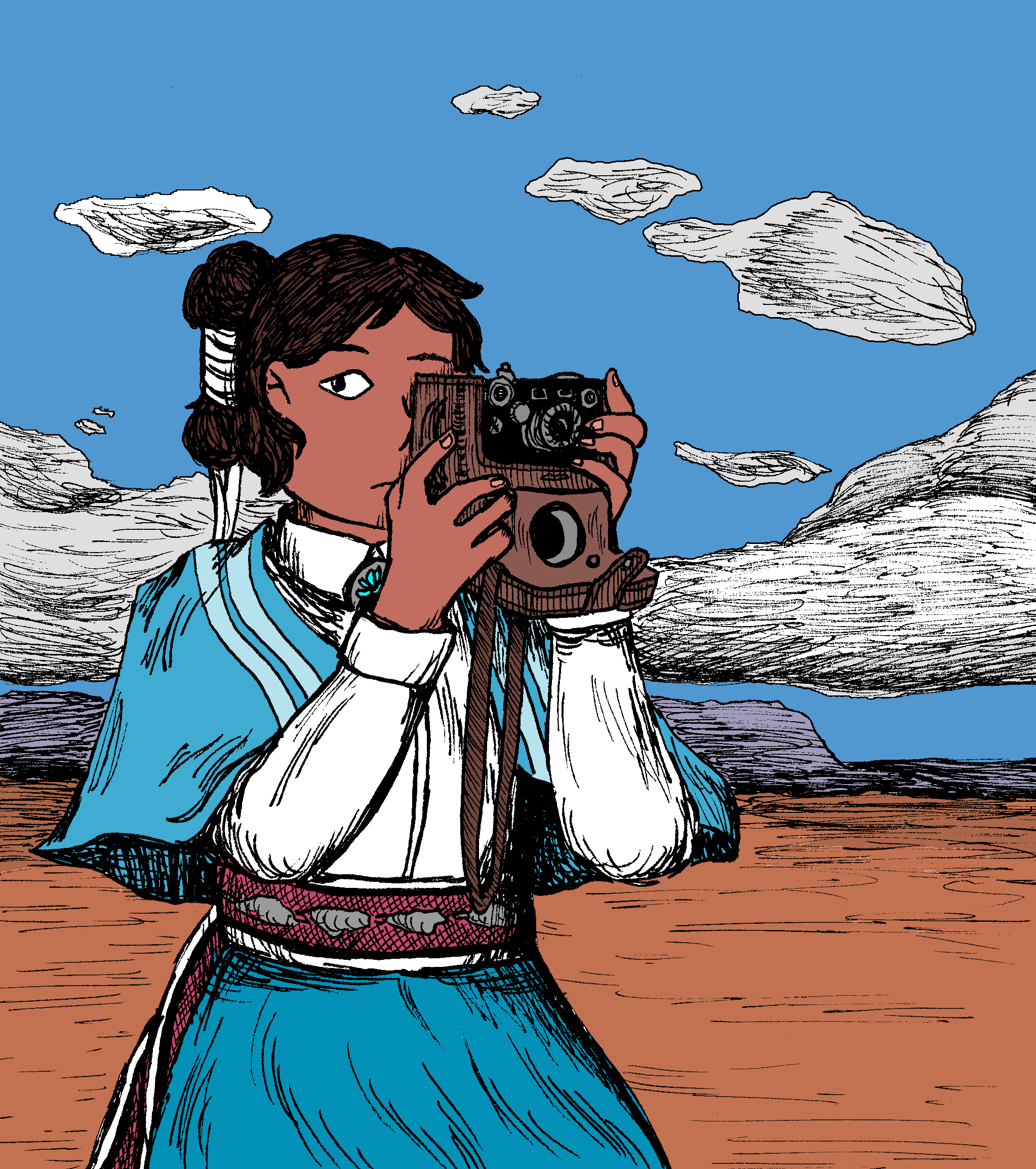
Kayla’s Character, Hozho.
I love creating art that depicts the land and those who tend to it. It soothes my soul and ignites remembrance. The most challenging part was mustering the strength to create something beautiful in the midst of utter heartache, grief, all while Mothering my children and myself. I feel so much not just personally but also globally. It’s a lot to hold. And once my pencil starts making lines on paper, I can’t stop. It’s life giving. –Xenia Berejnoi
What elements of your culture did you include in your artwork?
I included a few things from my culture such as the scenery, plus objects like the water pot, which I turned into a maze along with Xenia; the basket, which has some of the food we have in our area, like the three sisters, tepary beans, squash, and corn. I also included one of our sacred mountains and plant life. –Derrick Gonzales
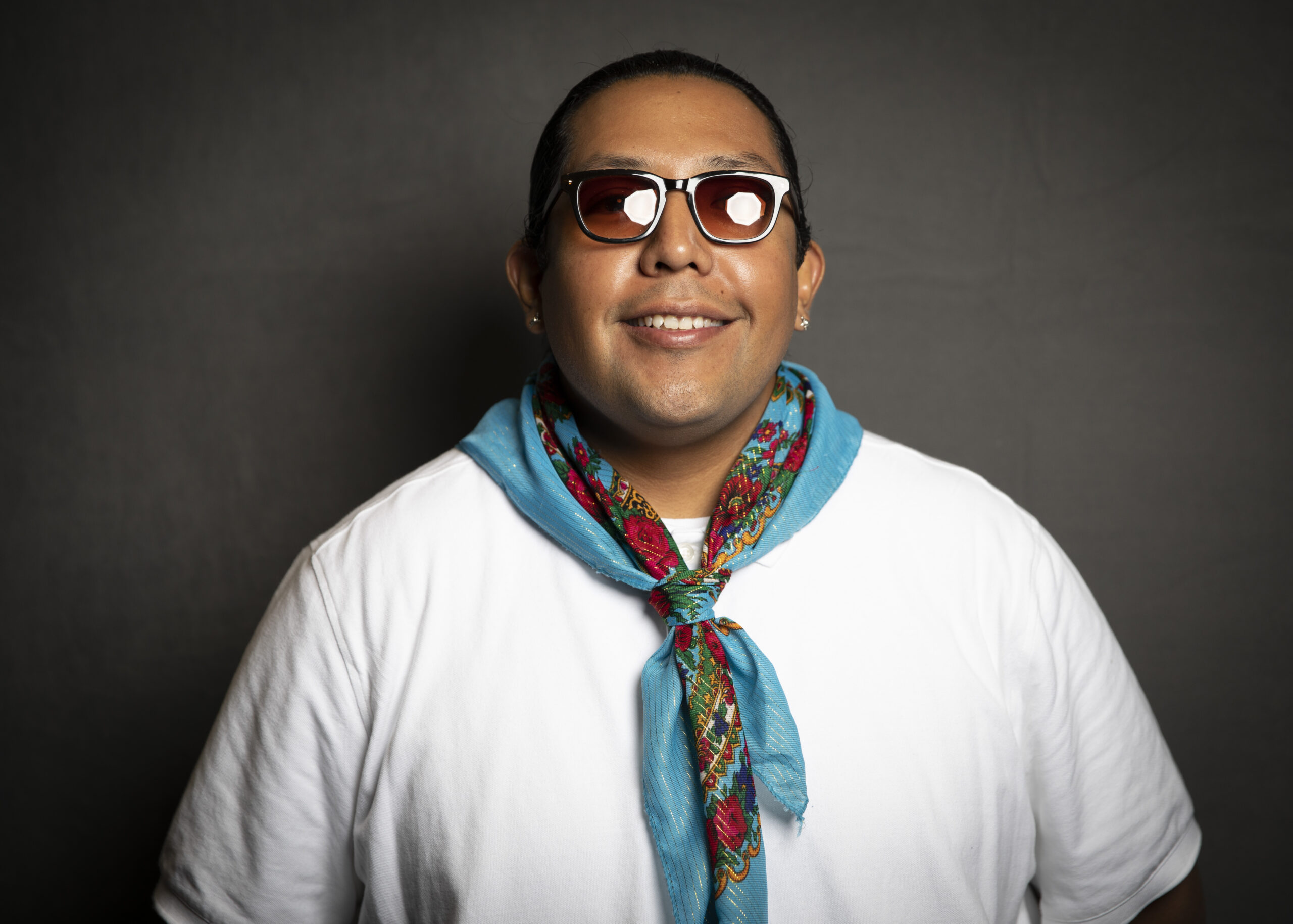
Derrick Gonzales’ portrait.
I didn’t have much of my culture in my artwork, but I did try to imply that the child and mother in the sloth picture are Indigenous. I’m from New Mexico and hearing about the ancient footsteps made me think of Indigenous people long ago walking across White Sands. I’ve been there before, and it became this very nice idea/thought that I was walking in the same area as people have so, so many years ago. –Kayla Shaggy
I am Diné (Navajo) and a type of creative skill taught from generation to generation in some families is the art of weaving. For the dot-to-dot illustration, we wanted to express how materials found in nature were used to create a cultural item. The history of weaving is a long one but in some instances weavers will use Navajo churro wool that is dyed from natural materials like plants and minerals. In my illustration, I chose the prickly pear cacti plant which is plentiful here in the high desert of New Mexico. The resulting color from using the fruit of this plant is usually between a deep red to a purple. –Natalya Nez
For this piece I wanted to honor the spirit of those who have helped me return to my Yaqui and Mixtec ancestry. I was born on Ute, Paiute, Shoshone, Goshute, Navajo lands. Including the surrounding lands which include the Pueblo and Apache. These are the lands that raised me. That held me. I do a lot of healing work with the land. I suppose I’ve always felt the spirits of those before me, human and non-human, assisting me on my journey. Those are the elements and cultures I wanted to show on the cover. Grateful. –Xenia Berejnoi
The elements of my culture that I included were of the great Antonio Azul, the last chief of the Akimel O’odham people. I felt it was only right to include this element for the idea of spreading knowledge since most might not know or heard of him. Hopefully I may spark attention to some, in hopes of doing their own research to learn about all the accomplishments this chief brought to the people. I also used tribal designs in my turtle shell that can be found across tribes throughout the southwest region. –Angelo Cortez
What do you hope the younger generations will learn from this book?
I hope younger generations learn more about Indigenous people, culture, and history. I hope they are inspired to learn more, and I also hope they’re inspired by the creativity and art to make their own! –Kayla Shaggy
The stories we tell are important. My hope is that they will learn the importance of tending, repairing what was broken, and paving new paths that honor all that is sacred. To remember that we are all connected and we must care for each other and the Earth Mother. All while having fun! –Xenia Berejnoi
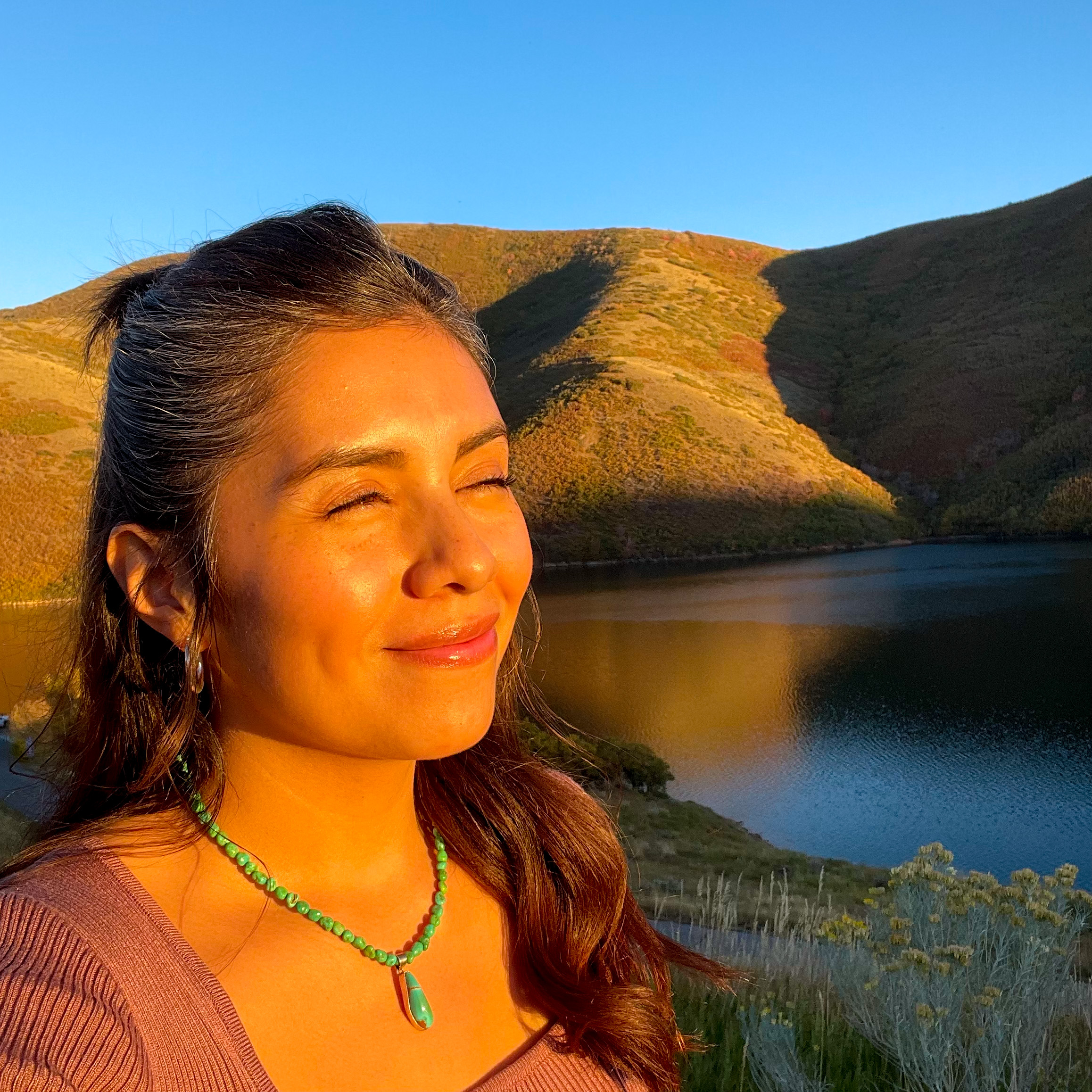
Xenia Berejnoi’s portrait.
I hope they learn something new about their tribe and things they didn’t know about other tribes. I hope this sparks the light for them to tap into their creative spirit as well. –Derrick Gonzales
All of the artists expressed gratitude to work on this project. We hope you enjoy, learn, and are inspired by our book! A free downloadable PDF of the book can be found here.

